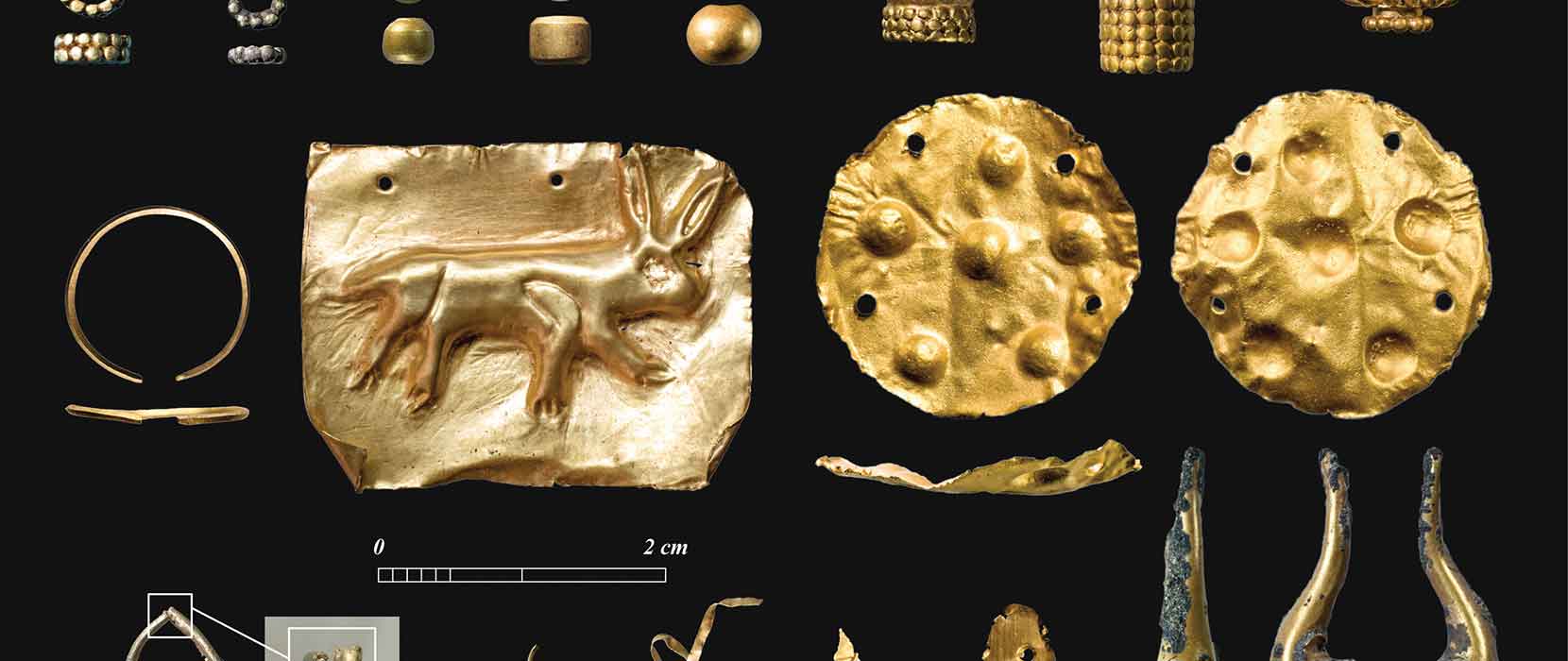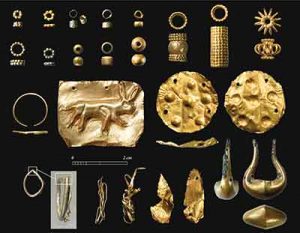3000 YEARS OF HUMAN LIFE IN WESTERN ASIA
The research team has since discovered that the use of the site started in the Early Bronze Age (c. 3000 BCE) and continued through four millennia into the early Islamic period, and has documented major changes in site use and human life style.
Researchers from the School of Humanities:
Professor Lloyd Weeks
Dr Charlotte Cable
Kristina A. Franke
Rich archaeological remains documenting 3000 years of human activities are buried deep in the sand dunes on the edge of the Rub’ al-Khali desert of Western Asia, the famous and forbidding Empty Quarter of southern Arabia. Over the past three years UNE researchers have been collaborating with the Government of Dubai in a program of archaeological field work, directed by Dr Charlotte Cable, and analytical research, directed by Kristina Franke, at the site of Saruq al-Hadid. The Saruq al-Hadid Research Project (SHARP), led by eminent archaeologist Professor Lloyd Weeks, has been created to investigate the technologies and life ways of prehistoric Western Asian people.
A large team of international specialists are approaching the site from several angles. This research comprises a wide range of analytical studies undertaken at UNE, including copper and gold metallurgy, iron metallurgy, animal bones, stone tools, and soil contamination. External research is undertaken by specialists on pottery, isotopic provenance studies on metals, and the plant and wood remains. Other aspects of the project include radiometric dating in relation to the long sequence of occupation to understand changes in the site across time, and the visual documentation of the site and its huge range of archaeological artefacts.
The research team has since discovered that the use of the site started in the Early Bronze Age (c. 3000 BCE) and continued through four millennia into the early Islamic period, and has documented major changes in site use and human life style. From the early Bronze Age to the Iron Age activities at the site changed from hunting, herding and cooking to metal working and specialist crafting, suggesting the site became a seasonal meeting place for people from across the region where ritual activities, built around a snake cult, took place. This is the main period in which the people of Saruq al-Hadid – for reasons the research team is still trying to determine – abandoned so many thousands of valuable copper, gold, and iron artefacts to the desert’s shifting sands. After this enigmatic peak in activity, the site seems to have been used predominantly for copper smelting up until AD 1000.
Overall, these ongoing studies are providing growing information on the site’s changing environment, the range of ritual, subsistence and productive activities that took place there, and the cultural and trade connections of Saruq al-Hadid with south-eastern Arabia and the wider Western Asia.



